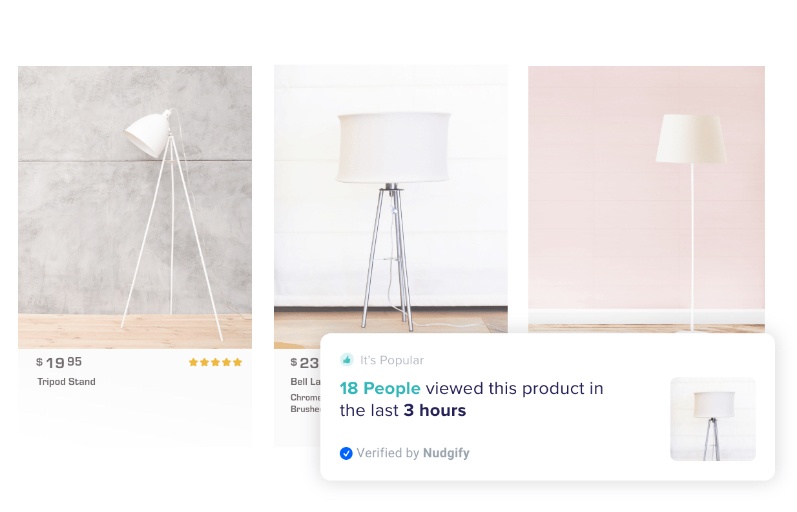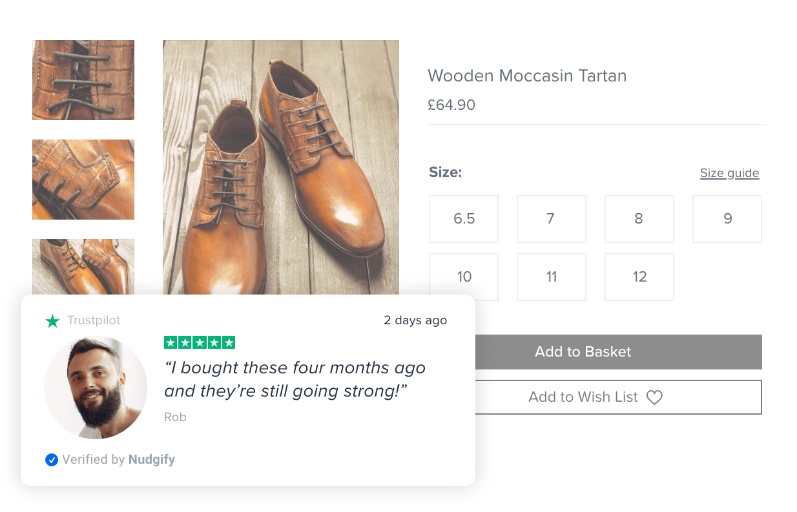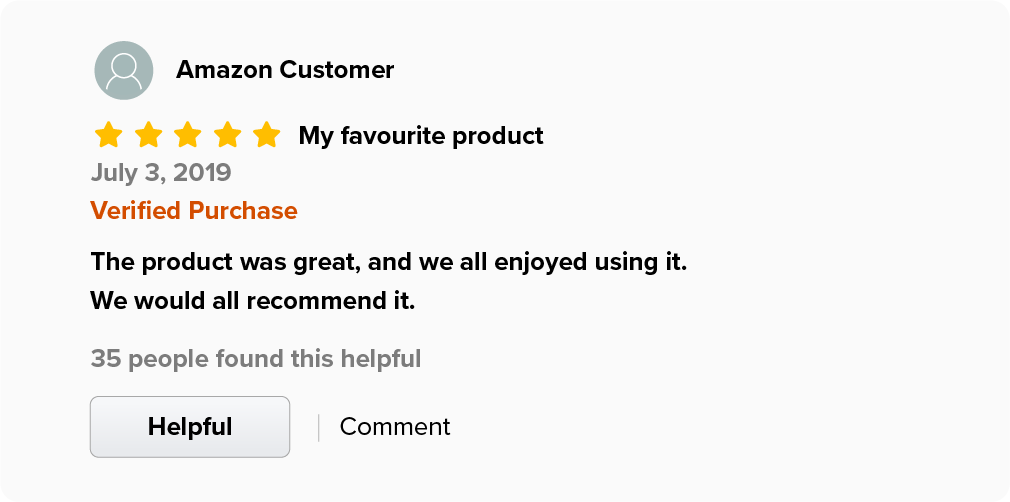Social Proof & Digital Marketing: How to Use It, with Examples
Have you ever wondered why TV shows use canned laughter, or why bartenders put money in their own tips jars? In a previous article we discussed the science of Social Proof. Here, we look at how Social Proof works, how it is used, and why social proof marketing is such a powerful sales tool.
Social Proof shapes Consumer Behaviour through imitation, conformity and consensus. It is one of the most effective tools available to digital marketers. A number of factors enhance the effect, such as when people are unsure how to behave or when they feel connected to the group they are imitating.
The term “Social proof” was coined in 1984 by Robert Cialdini in his book Influence.
Social Proof is a social and psychological phenomenon, also known as “informational social influence,” where individuals copy other people’s behaviour. It is responsible for the “buzz” that follows success and the way popularity comes in waves.
The effect occurs when a person is unsure of the correct way to behave. In this situation, they will often look to others for clues about the correct behaviour. The same principle applies when someone is unsure whether to trust something or believe someone. Social Proof can even shape our preferences and the choices we make.
When it comes to social proof, the two biggest factors that increase its impact are uncertainty and similarity. However, studies have also shown that attractiveness and desirability play an important role. These four factors correspond closely to the circumstances in which digital marketers operate. As a result, they help to explain why Social Proof marketing is so powerful.
1. Uncertainty: Overwhelming Choice and Social Proof
Ambiguity and doubt have been shown to enhance the effect of social proof. Modern life presents an overwhelming amount of choice. Not only do we have to decide between toast or cereals for breakfast, we now have to choose between hundreds of different brands for each.
Decision-making can be exhausting, and this increases that likelihood that we will look to our peers for recommendations and advice.
…how is this related to Digital Marketing?
With the emergence of large e-commerce platforms such as Amazon and Ebay, which offer an unprecedented number of options for any given item, Social Proof is a way of simplifying our choices.
A recent investigation explored the most significant influence on consumer choices for sites such as Booking.com. It found that the most influential factor across all case studies was Customer Reviews. Subjects were particularly responsive to reviews written by their friends.
A number of E-commerce sites display notifications specifically designed to provide Social Proof where the Purchase Decision occurs. The eCommerce platform Shopify, for example, offers a library of apps for improving eCommerce conversion rates. Some of the most popular solutions use notifications to communicate Social Proof.
2. Similarity: Why “Us” is the Most Powerful Word in Marketing
We are more likely to copy the behaviour of those who are similar to us. The characteristics that affect us most significantly are age and gender.
In 1984, the behavioural specialist David Murray conducted a study on the best way to stop adolescents from smoking. He compared four persuasive strategies and their effects on adolescent behaviour. The study found that the teenage subjects responded far more readily to advice and information from their same-age peers.
…what does this have to do with marketing?
Appealing to our social instincts is no secret to marketers. Just take a look at the following advertisement:

Marketing campaigns across a number of industries use gender or age groups to target their products.
3. Attraction: Browsers Can’t Ignore a Halo
The third factor that significantly enhances the impact of social proof is attractiveness.
The principle of attractiveness is the simple rule that we are more likely to listen to and comply with people who we find attractive compared to those we do not. In 1979, Shelly Chaiken conducted an experiment in which her students were approached by one of two people. The first was “attractive,” and the other “unattractive.”
The responses to these people showed that subjects were significantly more likely to be persuaded by prompts from the attractive people. This was true not only for their verbal responses, but also for their behaviours.
…what does this mean for marketing?
In Cognitive Psychology, Association is the linking of two separate objects or concepts. Some researchers, for example Albert and Bernice Lott, have found that qualities such as attractiveness and likeability are transferable.
In other words, positive feelings or experiences can be transferred to associated objects or ideas. This is one reason why “attractive” people and glamorous settings are used in advertisements. Creating a positive feeling in viewers allows associations to form between these feelings and the products on display.

4. Desirability: Why “Good” and “Bad” Always Matter
The last condition that affects our likelihood to engage in a behaviour is its perceived “desirability.” From a very young age we are taught to moderate our behaviour according to the norms and standards of those around us. These ideas are extremely powerful and very difficult to change. However, when they do change, the effects can be dramatic.
There is no better example for this than the 1920s PR campaign in which Ms. Bertha Hunt and Edward Bernays (the “father” of modern public relations) reinvented the cigarette as a symbol of women’s independence.
….how is this relevant to marketing?
One of the biggest secrets in marketing is that individual preferences are almost impossible to change. Instead, marketers focus on convincing people that their product is popular. To strengthen this approach, they will suggest that their product is popular with people that their target market find attractive, relatable and recognisable. However, one of the most enduring forms of persuasion is simply to make a product or an idea Socially Desirable.
eCommerce websites apply Social Proof through a number of well-practised tactics:
- Displaying information about recent purchases
- Giving a consistent number for newsletter sign-ups
- Showing how many people have viewed an item recently

- Inviting an expert or authority figure to endorse a product (or contribute to it)
- Encouraging social media engagement through rewards
- Sharing business milestones publicly
- Influencer marketing
- Using micro-influencers
- Sharing positive testimonials for products or customer service

- Embedding social proof in copy by creating a brand community
- Getting verified on all platforms (Twitter, LinkedIn, etc…)
- Embracing real-time statistics
- Using a Social Proof app to provide live social proof notifications
Because Social Proof has a snowballing effect, the largest eCommerce platforms tend to be the best at exploiting it. There are two eCommerce sites that do this better than anyone else: Amazon and Booking.com.
How Amazon.co.uk uses Social Proof
Amazon’s Social Proof strategy begins with copy. On their landing page, Amazon uses Social Proof to assure customers that they are the (rather than a) place to buy online.
We ship over 45 million products around the world
Contrary to most design guidelines, Amazon’s interface is exceptionally busy. Although the interface is clear, little consideration is given to the way it looks. This gives the impression of a bustling marketplace and highlights the volume of activity taking place on their site.
Every product sold by Amazon has a number of Social Proof features attached to it:
- Underneath product images, gold stars tell a browser how it has been rated by other users.
- The Amazon best seller ranking illustrates popularity and reinforces the sense of activity
- Customer reviews are frequently encouraged. When a purchase is made, an email is sent to the customer requesting a review. Even these reviews are subject to reviews, as browsers are asked to say if they were helpful or not.

How Booking.com uses Social Proof
Aside from eCommerce platforms like Amazon, some of the most prolific exponents of Social Proof in online marketing are travel companies. Within the tourist industry, traffic is dependable but competition for business is high. As a result, conversion optimization strategies such as Social Proof are particularly valuable.
Booking.com adopts a similar strategy to Amazon, providing a number of subtle clues about the popularity of the site. Text at the bottom of the page reminds visitors:
Our 28,486,761 listings include 5,776,141 listings of homes, apartments and other unique places to stay, and are located in 146,882 destinations in 229 countries and territories.
As with Amazon, each potential destination offered by Booking.com features a number of Social Proof features.
- The “Preferred Partner” system allows participating businesses to apply for certification based on customer service and value. These businesses can display a thumbs-up symbol.
- Reviews are displayed on the right hand of each destination, giving a mark out of ten, based on scores given for seven categories. This is then rendered as either “Good”, “Very Good” or “Superb.”
- Particular destinations have dynamic text displaying the number of people who have viewed the destination, or booked it, in the last hour. This combines the effect of Social Proof with a sense of Urgency.
Social Proof offers a great way of highlighting value. Whilst it can’t make people buy your products, it can help to underline your sales pitch. It also provides essential information that is otherwise difficult to communicate online:
- Trust: This is a huge benefit of displaying customer reviews. One of the major obstacles to making online sales is customer anxiety
- Excitement: In a real store, the customer experiences the buzz of the shop-floor. Online, you have to work harder to recreate the same atmosphere.
- Community: The most successful businesses have the best customers. This is not an accident; fostering a sense of community between your customers is a deliberate and difficult strategy. Social Proof can help fast-track the process.
Social proof is the reason why shows use a laughter track, and why respondents consider such shows funnier than those without one. Bartenders and buskers have learned to work with the principle of Social Proof. Many admit to “salting” their own tip jars at the beginning of an evening to encourage generous tipping.
Although the principle of social proof is not a new phenomenon, its influence over our lives is increasing. As “smart” technologies, media saturation and Machine Learning develop together, the effect of consensus and imitation is likely to grow.
To get you started quickly with Social Proof, install a Social Proof App. Using this app can help you turn more visitors into customers.



